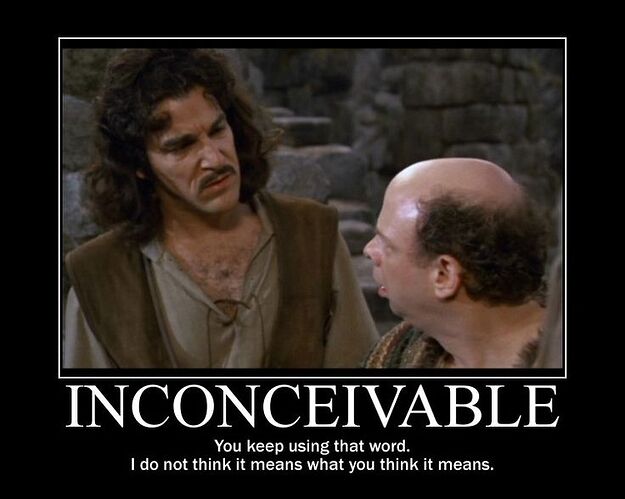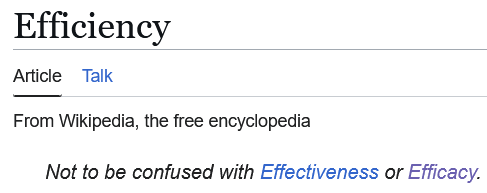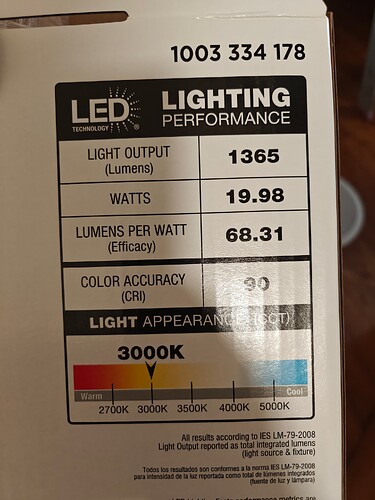You used a 6v driver on a 3v led? And it worked???
Worked isn’t the right sentence. It didn’t died would be more appropriate. The inductor will be saturated all the time, the boost driver isn’t boosting anything.
The sbt90.2 shows enormous ting shift in virtually every sample I own, from quite green at low to flat out negative DUV at anything above 10 amps or so
One tiny pre-production run and canceled was worse than never doing it at all on the 4000k 95cri sft40.
Yeah this is was I meant in almost every test of Luminus LEDs
I would love a 4000K R70 SFT-25R/SFT-40. 5000 and especially 6700K is just way too cold for throwers. Too much haze once your air is anything but super dry. I don’t care about CRI on throwers and would rather take the efficiency of R70, but the damn thing not throwing a bright lightsaber in the night sky that blinds me more than it illuminates the target would be great.
Also, pls, no more tint-shift. AFT-90 does this really well. Same phosphor mixture on all upcoming R70 Luminus would be great.
Agreed. I dont understand 6500K throwers. So much haze.
4000K would be perfect.
Im going to try the high cri 3000K sft40, just havent bought it yet. I want to try the TD01C light too, compared to L21A and M21D.
Beware, the high cri 3000K sft40 does not make much sense in a thrower (yes I tried a few times, incl TD01C).
The high CRI and low CCT reduce output too much to a point where you see less (far) with it compared to an SFT40 5000K.
The ideal CCT for a thrower is 4500K and low-CRI to me.
100% true. Luminus 3000k has abysmal efficiency.
It is unclear whether the 3000K is less efficient than the 6500K. If it were much less efficient, it would convert a much greater proportion of input power to heat, and therefore reach the point of diminishing (maximum) output sooner than a more efficient emitter. But side-by-side tests of the two LEDs show them reaching maximum at around the same input power.
What you meant to say is that the 3000K has less efficacy, that is, the light it emits is less stimulating to the human eye. Fewer lumen count per watt.
You know good and damn well that inside hobby flashlight circles lumen/watt is referred to as efficiency regardless of whether it’s being burned off as extra heat or not. Also I’m not convinced that the 3000k doesn’t burn off more energy as heat. I’ve got two Convoy s21e with sft40 and 5 amp buck drivers, one each in 3000k and 5000k. Every time I’ve tried to test in as similar conditions as possible (such as side-to-side) the 3000k always heats up slightly quicker. The only real issue in my testing that I can see is one of the lights is MAO instead of anodized but I doubt that makes much difference.
I’ve always hated the word efficacy because it’s an uncommon English word, so it doesn’t roll off my tongue well.
Efficiency makes more sense to me because it’s a more common English word, even if it’s technically incorrect. ![]()
I’ll try to use phrases like “higher efficacy” in the future, if I remember. ![]()
The use of “efficiency” in place of efficacy may be justifiable if the intended meaning (lm/W) is clear from context. Here, however, it is far from the case: the efficiency (out W/in W) is already a metric of interest within the flashlight hobby in many contexts, from emitters to drivers. Many LEDs (e.g., SST20-DR) use efficiency instead of efficacy to quantify performance.
It really doesn’t hurt for everyone to just learn a single new word, something kindergartners do every single day. Every time a new idea is created, new words must be made correspondingly to refer to these ideas in a precise, unambiguous way. Surely the flashlight community has no issue with even less common terms like LED, CRI, duv, die, phosphor, and so forth, why discriminate against the word “efficacy”?
I appreciate this very much. Fixing the abuse of terminology must start somewhere!
This seems to be a misrepresentation of the hobbyist flashlight circle. We are perfectly capable of understanding definitions:
Luminous efficacy: a measure of how well a light source produces visible light. It is the ratio of luminous flux to power, measured in lumens per watt in the International System of Units (SI)."
(Energy conversion) efficiency: the ratio between the useful output of an energy conversion machine and the input, in energy terms. The input, as well as the useful output may be chemical, electric power, mechanical work, light (radiation), or heat. The resulting value, η (eta), ranges between 0 and 1.[1][2][3]
There are heuristics suggesting this is generally true, but the lack of the early leveling-off behavior (which overheating always results in) demands another look.
I’m not arguing that the 3000K is not less efficient, just that I see no conclusive evidence toward this claim, and that the abuse of terminology makes communication difficult.
I have trouble learning some new words (like this one), but in this case I wrote a note to myself that I’ll hopefully refer to. ![]()
I use an extension to point out some spelling and grammar errors (when I post online), but that extension is not a flashaholic that knows the difference between efficiency and efficacy. ![]()
Understood, thank you for pointing this out! It is a possibility I had not realized. I often experience the same frustrations with auto-correct…
This is not directed at anyone in particular, except perhaps myself. ![]()
Replace “Inconceivable” with “Inefficient”…
By the way, sometimes I stay on a subject for a while to remind myself to try to get the subject correct.
(I think I’m done talking about efficacy now.) ![]()
I think You’re bending definitions to match Your preferred vocabulary. Sure, luminous efficacy is a specific term for exactly lm/W, so it is a more precise term. But only if You say the whole phrase, not just stick to efficacy
But efficiency is just how much output You get for given input. Output doesn’t have to be of the same type as input. So it’s perfectly fine to speak of LED efficiency in terms of lm/W and most people will understand it this way. Even in the definition You posted it states that efficiency can be used for light output. And I feel saying LED efficiency is much less cumbersome than saying luminous efficacy and is more widely understandable.
The definition has been copied exactly, I don’t see how it has been bent as you claimed.
I agree with both points; however, what you appear to miss is that despite the type difference, efficiency requires the input and output to be in the same units. Otherwise, there is no way to get a unitless proportion between 0 and 1. The input can be electrical watts, and the output can be in radiometric watts. But both are in watts.
I disagree; the confounding of terminology introduces unnecessary ambiguity. For example, take a UV LED that converts 50% of its input power into radiometric output. This emitter has an efficiency of 50% by definition, and an efficacy of 0 lm/W, due to the output being invisible. If someone were to ask you for efficiency, would you tell them 0 lm/W rather than 50%?
Efficacy is not more cumbersome than efficiency, it even has few letters. But more importantly, it actually means lm/W, rather than a unitless proportion. Why insist on the wrong terminology when the right one exists?


